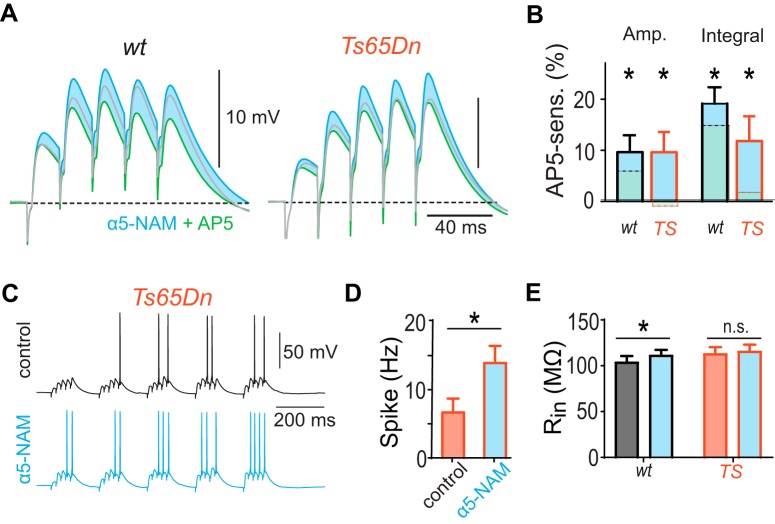Figure 5.
Reduction of α5-GABAR-dependent inhibition increases synaptic NMDAR activation and spike output in Ts65Dn mice. A, Postsynaptic potentials evoked by burst stimulation (5 pulses, 50 Hz) of the SC in control condition (gray) were enhanced by the acute application of the α5-NAM (1 μm RO4938581; blue). Under this condition, application of the NMDAR-antagonist AP5 (50 μm, green) revealed an NMDAR-mediated component in both WT and Ts65Dn mice (blue shaded area). B, Group means of the NMDAR-mediated contribution to the amplitude and integral of the last PSP. All significant contributions by NMDAR to the PSP in WT (n = 7) and Ts65Dn mice (n = 8) are indicated: *p < 0.05 (one-sample t test). For comparison, the NMDAR-mediated component in the absence of the α5-NAM is indicated by the dashed lines (from Fig. 1E). C, Example voltage traces of theta burst-evoked AP firing in pyramidal cells during SC stimulation before and after the addition of the α5-NAM (1 μm) in Ts65Dn mice. D, Group means show a significantly increased spike rate (p = 0.022; paired t test, n = 5). E, The input resistance was not significantly increased by the α5-NAM (p = 0.76, n = 8; paired t test) in Ts65Dn mice. However, there was a small increase of the input resistance in WT pyramidal neurons (p < 0.005; paired t test, n = 17).

